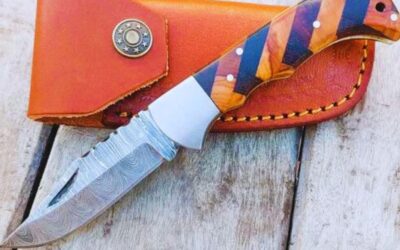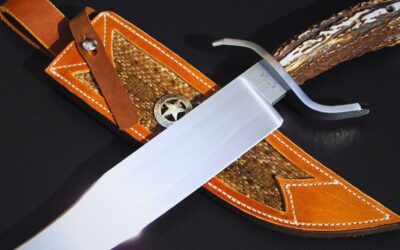Introduction to kitchen knives
When it comes to cooking, a good kitchen knife can make all the difference. Whether you’re a seasoned chef or just starting in the kitchen, having the right knife can elevate your cooking experience. This guide will walk you through everything you need to know about kitchen knives, from understanding the different types to choosing the best one for your needs.
Understanding Kitchen Knives
What Makes a Good Kitchen Knife?
A good kitchen knife is all about balance, sharpness, and comfort. The right knife should feel like an extension of your hand, providing you with precision and control. The materials used, the craftsmanship, and the design all play crucial roles in the overall quality of a kitchen knife.
Types of Kitchen Knives
There are different kinds of kitchen cuts, each intended for explicit undertakings. Understanding the purpose of each can help you make an informed decision when purchasing.
Types of Kitchen Knives and Their Uses
Chef’s Knife
The culinary specialist’s blade is the most adaptable and regularly involved blade in the kitchen. It’s perfect for chopping, slicing, and dicing a variety of ingredients. Its broad blade and sharp edge make it a must-have for any kitchen.
Paring Knife
A paring knife is small but mighty. It’s ideal for tasks that require precision, such as peeling, trimming, and detailed cutting work. Its short blade allows for better control, making it a staple in any kitchen.
Bread Knife
The bread knife features a serrated edge, making it perfect for slicing through bread without squashing it. It’s also great for slicing through cakes and other baked goods with a delicate crumb.
Carving Knife
A carving knife is designed for slicing thin cuts of meat, such as roasts and poultry. Its long, thin blade allows for smooth, even slices, making it an essential tool for holiday meals and special occasions.
Santoku Knife
The Santoku knife, originating from Japan, is similar to a chef’s knife but with a slightly different design. It’s excellent for slicing, dicing, and mincing, offering a more precise cut due to its thinner blade.
Boning Knife
A boning knife is perfect for deboning meat and poultry. Its narrow, flexible blade allows you to maneuver around bones and joints with ease, making it a valuable tool for butchering tasks.
Utility Knife
A utility knife is the jack-of-all-trades in the kitchen. It’s smaller than a chef’s knife but larger than a paring knife, making it ideal for a variety of tasks, from slicing vegetables to cutting sandwiches.
Cleaver
The cleaver is a heavy-duty knife designed for breaking down large cuts of meat and bones. Its thick, heavy blade can handle tough tasks, making it a go-to for butchery.
Features to Look for in a Kitchen Knife
Blade Material
The material of the blade is crucial in determining a knife’s performance and durability. Normal materials incorporate treated steel, carbon steel, and fired.
- Stainless Steel: Resistant to rust and corrosion, making it low maintenance.
- Carbon Steel: Known for its sharpness and edge retention but requires more care to prevent rust.
- Ceramic: Extremely sharp and lightweight but can be prone to chipping.
Handle Material
The handle should provide a comfortable grip and balance to the knife. Normal materials incorporate wood, plastic, and composite.
- Wood: Traditional and aesthetic but requires more maintenance.
- Plastic: Durable and low maintenance but may not offer the best grip.
- Composite: A blend of materials offering durability and a good grip.
Blade Edge
Choosing between a straight and serrated edge depends on your cutting needs. Straight edges are ideal for precision slicing, while serrated edges excel at cutting through tougher surfaces.
Balance and Weight
A well-balanced knife provides better control and reduces fatigue during use. The weight of the knife should feel comfortable in your hand, allowing for smooth, effortless cuts.
Comfort and Grip
Ergonomics play a significant role in the comfort and usability of a knife. Look for handles that fit well in your hand and offer a secure grip to prevent accidents.
Top Kitchen Knife Brands
Wüsthof
Wüsthof is renowned for its high-quality, durable knives that offer excellent performance. Their knives are well-balanced and come with a razor-sharp edge, making them a favorite among professional chefs.
Shun
Shun knives are known for their exquisite craftsmanship and sharpness. They are made using traditional Japanese techniques, resulting in knives that are both beautiful and functional.
Victorinox
Victorinox offers affordable, high-quality knives that are perfect for both professional and home kitchens. Their knives are known for their sharpness and comfortable handles.
Global
Global knives are famous for their sleek, modern design and razor-sharp edges. They are lightweight and well-balanced, providing excellent control and precision.
Henckels
Henckels is a trusted name in kitchen knives, known for their durability and performance. Their knives are well-crafted and offer a good balance of sharpness and comfort.
Reviews of the Best Kitchen Knives
Wüsthof Classic 8-Inch Chef’s Knife
- Pros: Excellent balance, razor-sharp edge, durable
- Cons: Higher price point
Shun Classic 6-Inch Chef’s Knife
- Pros: Sharp and precise, beautiful design, comfortable handle
- Cons: Requires more maintenance
Victorinox Fibrox Pro 8-Inch Chef’s Knife
- Pros: Affordable, sharp, comfortable grip
- Cons: Lacks the aesthetic appeal of more expensive knives
Global G-2 8-Inch Chef’s Knife
- Pros: Lightweight, razor-sharp, modern design
- Cons: Handle can be slippery when wet
Henckels International Classic Chef’s Knife
- Pros: Durable, well-balanced, comfortable handle
- Cons: Requires regular sharpening
Caring for Your Kitchen Knives
Cleaning and Maintenance
To ensure the longevity of your kitchen knives, proper cleaning and maintenance are essential. Always hand wash your knives with mild soap and water, and dry them immediately to prevent rust and corrosion.
Sharpening Your Knives
Regular sharpening is crucial to maintain the performance of your knives. You can use a whetstone, sharpening steel, or an electric sharpener. The frequency of sharpening depends on how often you use your knives, but a good rule of thumb is to sharpen them every few months.
Proper Storage
Storing your knives properly prevents damage and maintains their sharpness. Options include knife blocks, magnetic strips, and blade guards. Ensure that the knives are stored in a way that keeps the edges protected and the handles easily accessible.
Conclusion
A good kitchen knife is an investment that can significantly improve your cooking experience. By understanding the different types of knives and their uses, as well as the features to look for, you can choose the perfect knife for your needs. Remember to care for your knives properly to ensure they remain sharp and in good condition for years to come.
Read More: How To sharpen a knife
FAQs
How often should I sharpen my kitchen knives?
It’s best to sharpen your kitchen knives every few months, depending on how frequently you use them. Regular honing can also help maintain the edge between sharpenings.
What is the best way to store kitchen knives?
The best way to store kitchen knives is in a knife block, on a magnetic strip, or in blade guards. This keeps the edges protected and prevents accidents.
Can I put my kitchen knives in the dishwasher?
It’s not recommended to put kitchen knives in the dishwasher, as the harsh detergents and high heat can damage the blades and handles. Hand washing is always the best option.
How do I choose the right kitchen knife for my needs?
Consider the tasks you frequently perform in the kitchen and choose a knife that suits those needs. A versatile chef’s knife is a good starting point, followed by specialized knives like a paring knife or bread knife.
Are expensive kitchen knives worth the investment?
Expensive kitchen knives often offer better materials, craftsmanship, and performance. If you cook frequently, investing in a high-quality knife can be worthwhile for the improved experience and durability.



0 Comments